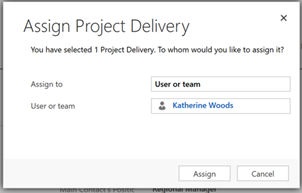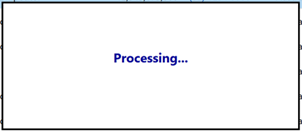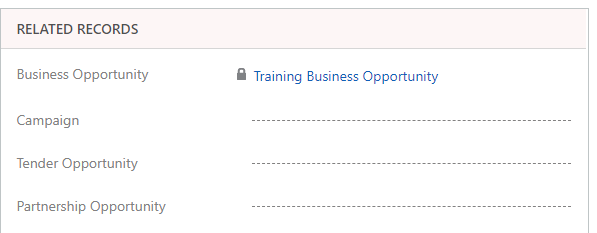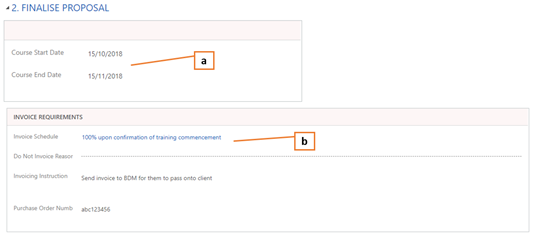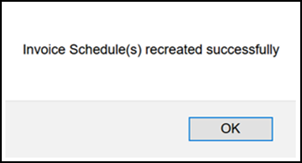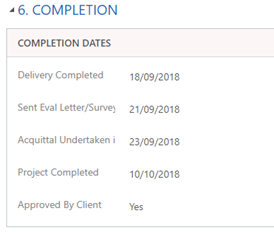
EduRe – TAFE QLD Help & Training
In this topic
- What is a Project Delivery?
- Business scenario
- Business standards
- Create a Project Delivery
- Edit a Project Delivery
i. Details
ii. Enquire Details
iii. Related Records
iv. Completing the Confirm Details stage
i. Details
ii. Lead Personnel
iii. Business Proposal
iv. Business Proposal Contents
vii. Completing the Finalise Proposal stage
iii. Funding
iv. Recalculating the Cost Summary
vi. Completing the Finalise Costs stage
3. Generate the Business Proposal
i. Regenerating Invoice Schedules
ii. Completing the Invoice Schedule stage
iii. Editing of Invoice Schedule records by Finance
iv. Create and Assign Milestones
f. Completion
What is a Project Delivery?
The Project Delivery record is used to manage the agreed services as defined in the Business Proposal, associated with repeat or first-time clients (Accounts and Contacts).
The Project Delivery form is made up of a Header, Business Process Flow, Messages, Body, and Footer, as shown below.
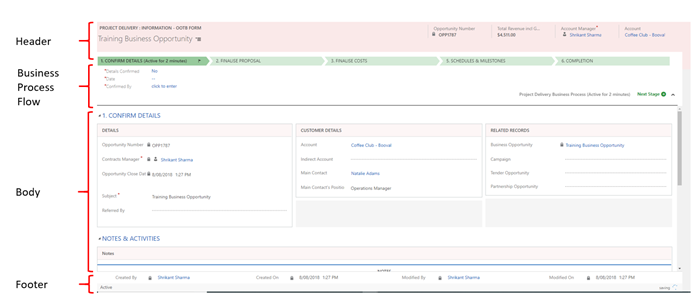
The Project Delivery record is broken down into multiple sections within the Body of the form. These sections are aligned with the stages that make up the EduRe service business process flow.
The business process flow provides a focus on the information required for each stage of the EduRe Project Delivery service process.
The stages are Confirm Details, Finalise Proposal, Finalise Costs, Schedules & Milestones, and Completion. These stages are meant to guide you through managing a project delivery through to completion.
Only the sections within the body of the Project Delivery, corresponding with the current and/or completed stages, are visible to the user; all other sections are hidden.
Users can read all Project Deliveries regardless of the “owning” Business Unit, however, you may only update and assign Project Deliveries that belong to your Business Unit.
Managing a Project Delivery means that you are coordinating the internal tasks, deliverables, services, and financial actions required to bring about an agreed delivery conclusion.
Business scenario
When a Business Opportunity is closed as won, it is then Converted to a Project Delivery. Related invoice schedules are also generated at this time, and are processed accordingly with the project start and end dates.
This module also allows users to track the status of invoices against a project, for example whether an invoice has been raised, cancelled, or rescheduled. Invoice Schedule Reports can be generated from EduRe to identify those invoices which have been scheduled to be raised.
The Project Delivery module also allows Users to assign key milestones to internal stakeholders in EduRe that are involved with delivering the service or product. The progress of these milestone tasks can be tracked in the module through to completion of the project.
A separation of Business Opportunities from Project Deliveries allows the Organisation to perform comparisons between expected and actual revenue in the sales pipeline.
Mark has won the business opportunity with Roma Hospital and now the training needs to be provided. Mark works with a Sarah at TQSW to ensure the delivery of the project.
Sarah has been assigned as the contract manager but works closely with Mark and the teaching staff to ensure a successful delivery.
Business standards
1. One person per Project Delivery is responsible to ensure all milestones are achieved and all invoices are sent and paid. The Project Delivery manager may assign responsibility to other people to ensure activities are performed but the Project Delivery owner is ultimately responsible.
2. All conversations are recorded as notes and all activities such as meetings, phone calls, emails, proposals, other documents, etc.… are recorded against the project delivery as it moves through the stages.
3. The Project Delivery is closed as completed when final payment is received and all details on the Project Delivery form are completed. The Project Delivery manager (owner) is responsible for completing the project delivery record.
Create a Project Delivery
It is not possible to manually create a Project Delivery record. All Project Delivery records are automatically created by closing a Business Opportunity as Won.
Edit a Project Delivery
If your job mostly involves the sales process, you will need to use the Project Delivery record type to manage the information between you, representing TAFE Queensland, and the companies and organization you engage with.
1. Select EduRe in the navigation bar
2. Click on Project Deliveries in the menu options
3. Choose +NEW from the command bar
4. Enter the relevant information
5. Click on SAVE & CLOSE (to save the entered information and close the Project Delivery)
– OR –
6. Click on SAVE (to save the Project Delivery and continue working on the record)
Confirm Details stage
The Confirm Details stage is used to capture, and maintain, information regarding the contracts manager, subject, related records including the client.
Details
The Details section is used to capture the Project Delivery’s identity, the Contracts Manager (mandatory), the Referred By reference (can be referred by e.g. Tender Team or a centralized unit distributing the demand for training), and subject (mandatory),
Note: Although there is nothing mentioned in the business standards regarding Subject naming conventions for Project deliveries, we recommend that the subject name should enable anyone to understand what this contract is for, without needing to open the record.
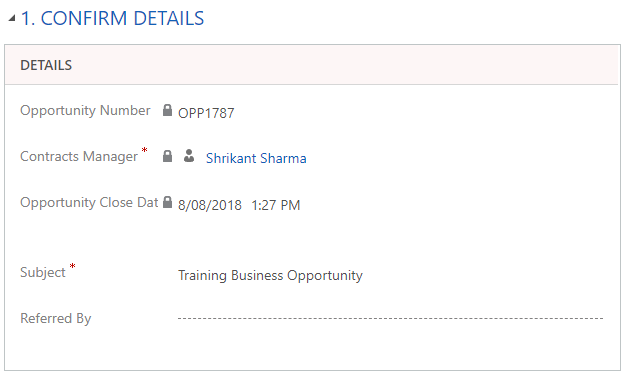
Customer Details
The Customer Details section enables you to associate an Account and Contact with the Project Delivery, plus capture the contact’s position.
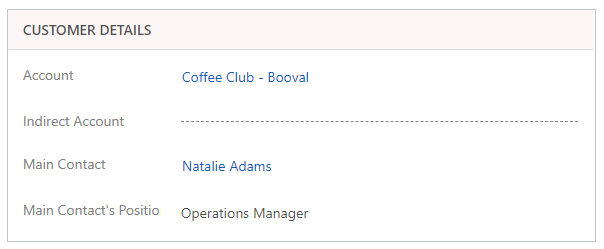
Completing the Confirm Details stage
1. The flag icon in the business process flow ribbon indicates the current stage of this Project Delivery.
Tip: Ensure that you have entered as much information as possible in the above sections before completing this stage.
2. Click on the Details Confirmed field to change it to Yes.
Note: this action will automatically populate the Date and Confirmed By fields.
3. Click on Next Stage.
Note: this action will “tick” the Qualify stage, and move the flag icon to the next stage, exposing the prepare proposal section.

Finalise Proposal
The Finalise Proposal stage is used to capture and maintain information regarding the course start and end dates, associated TAFE personnel, project timeline, contents of the business proposal, and who (TAFE and/or Client) is providing what.
Note: all the information for this stage is automatically populated when the business opportunity was closed as won; except the Project Initiation Timeline details (Confirm Deliverable, Initial Project with Faculty, and Project Commencement).
Course Dates
The Course Start Date and Course End Date fields are required to calculate the set of “invoice date schedule”.
Note: you can recalculate the invoice schedule by using the regenerate invoice schedule function if the course dates have changed from the original business proposal dates
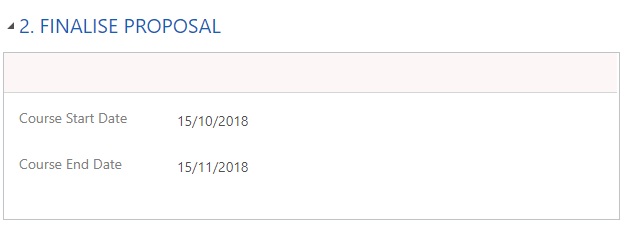
Lead Personnel
The Lead Personnel section is used to identify the TAFE Queensland region, teams and business managers associated with the Project Delivery.
The Lead Region field is tightly linked to the Business Unit of the Business Development Officer/Owner of the Project Delivery.
The Lead Team and Lead Faculty fields are used for reporting purposes required in all Business Opportunity, Project Delivery, and Invoice Management reports.
The Lead Business Line Director (BLD) field is used to capture the Faculty Director, or Business Development Manager, and is required for approval process workflow emails to be sent.
The 2nd Approving User field is used to capture an overseeing team or individual, this could be the contract team or Director of Business Unit, and is required for approval process workflow emails to be sent.
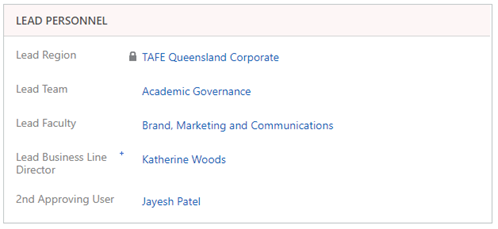
Business Proposal
The Business Proposal section allows you to identify the contract type for this business proposal.

Business Proposal Content
The Business Proposal Contents section allows you to specify various information regarding the proposed services and deliverables.
All information entered in this section can be imported onto any revised Business Proposal document.
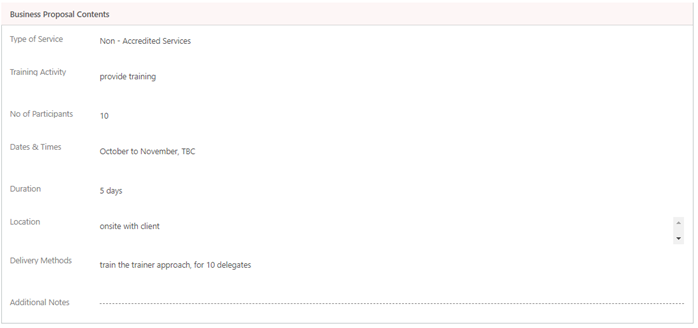
TAFE to Provide
The TAFE to Provide section allows you to specify various details regarding the TAFE Queensland supplied components.
All information entered in this section can be imported onto any revised Business Proposal document.

Client to Provide
The Client to Provide section allows you to specify various details regarding what the client will be supplying.
All information entered in this section can be imported onto any revised Business Proposal document.

Completing the Finalise Proposal stage
1. The flag icon in the business process flow ribbon indicates the current stage of this Business Opportunity.
Note: Ensure that you have entered as much information as possible in the above sections before completing this stage.
2. Click on the Proposal Finalised field to change it to Yes.
Note: this action will automatically populate the Date and Finalised By fields.
3. Click on Next Stage.
Note: this action will “tick” the Prepare Proposal stage, and move the flag icon to the next stage, exposing the cost proposal section.

Finalise Costs
The Finalise Costs stage is used to capture and maintain information regarding the costs associated with the Project Delivery. The costs are broken down into 4 main segments, Delivery, Non-Delivery, Funding and Invoice Requirements; allowing you to identify all the costs and funding sources explicitly, plus define the initial invoice schedule breakdown.
What needs to be resubmitted for approval?
Minor changes in the context of the Business Proposal Content can be made without the need to resubmit the Business Proposal for approval. However, changes to costing will require the Project Delivery to be resubmitted for internal approval.
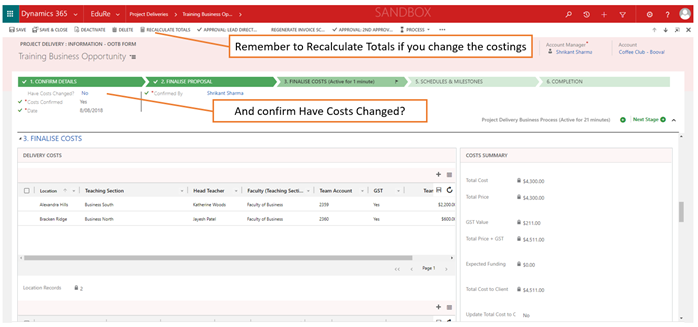
Delivery Costs
The Delivery Costs section is used to capture the total revenue applicable to each team involved in the potential delivery of the services.
1. In the first table, enter a row for each team delivering services in this opportunity. The location should refer to the location of the team, not necessarily the location where the program is being delivered. To add a new Cost Section record, click (+) in the top right of the table

2. Complete the Quick Create: Cost Section options as required

Tip: If you’re unable to find the correct team, scroll to the bottom of the options displayed and select ‘look up more records’. You will then be presented with a ‘Lookup Record’ pop up where you can search for further options. Note you may also need to change the ‘Look In’ field to ‘Active Teaching Sections’
3. Click on the save icon at the top right corner of the table once all Cost Sections are added.
Tip: If you need to edit or remove a Cost Section, select the applicable record within the table and scroll to the right, where you will be presented with options to delete either delete the record reopen the Quick Create: Cost Section and edit as required.

4. In the second table, enter a row for each service or program being delivered by clicking the (+) in the top right of the table to enter cost details.

Tip: In the Cost Section field, select the team delivering the program or services. You will only be able to select from teams you have added in the first table.
5. In the expense field, use either Total Course excl. GST or Total Course + GST as appropriate.
6. In the Costing Rate field, indicate the total revenue TAFE receives for one service delivery (e.g. the student contribution + subsidy amount for a single student completing a program). In the Quantity field, indicate the number of services being delivered (e.g. number of students).
7. If GST is applicable, click on the GST field to switch from ‘No’ to ‘Yes’.
8. In the note section, you may indicate the DP number, qualification code, or any other relevant information.
9. Click on the save icon at the top right corner of the second table.
Tip: you will only be able to add costs once you created and saved a Location and a team.
Note: use F5 to refresh the web page if the Delivery Cost command buttons are not visible.
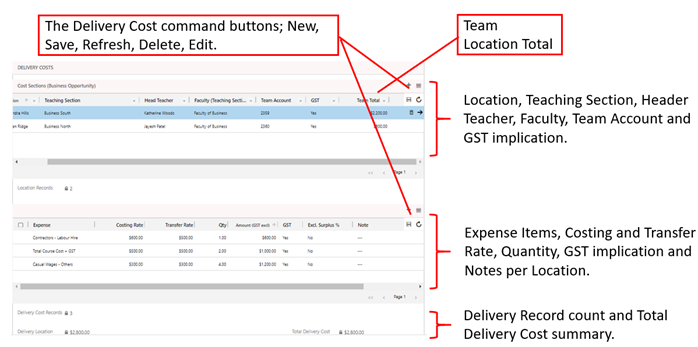
Non-Delivery Costs
The Non-Delivery Costs table is currently not in use by TAFE Queensland, therefore does not need to be completed.
Funding
The Funding section is used to identify revenue TAFE Queensland expects to receive for this opportunity from sources other than the client (i.e. subsidies), and captures the fund sources, values, and conditions. These funds offset the total Cost to the Client within the Cost Summary.
1. Add a row for each type of funding applicable to this business opportunity.
2. In Expected Funding, enter the total amount expected to be received from the subsidy.
3. In the Funding Conditions section, you may also indicate how this figure was calculated (e.g. $1,000 per x10 students on the program).
Note: use F5 to refresh the web page if the Funding command buttons are not visible.

Recalculating the Cost Summary
The Cost Summary section summarizes the values entered in the Delivery Costs, Non-Delivery Costs and Funding sections.
To calculate for the first time, or recalculate the summary values, you must use the following method.
1. Click on the Recalculate Opportunity button in the command bar.
2. Click in the “Have Costs Changed?” field, changing the value to Yes.
Tip: if this button is not visible, look in more commands (the 3 dots).

After recalculating, check the costs summary table to ensure information has been added correctly.
Tip: Check the Total Cost to Client, Expected Funding and Total Revenue values are correct.
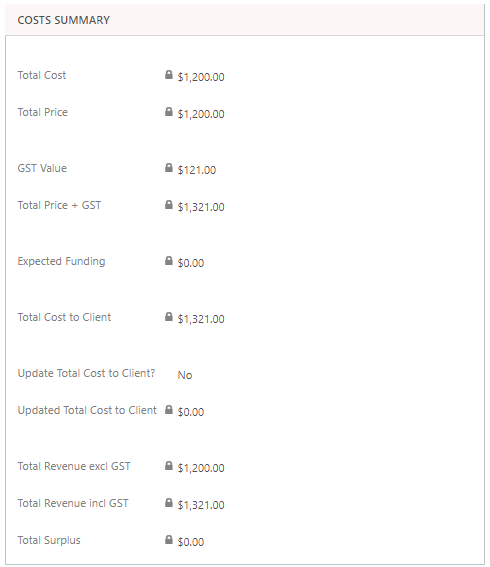
Invoice Requirements
The Invoice Requirements section is used to indicate the invoice schedule definition, invoicing instructions and capture the client’s purchase order number.
Note: if “Do not invoice” is selected for the Invoice Schedule, then no invoice schedule will be created for any associated Project Delivery. Please ensure that a “Do Not Invoice Reason” is entered in this scenario.
Tip: Invoice Instructions and the client’s Purchase Order Number are pulled onto all invoice schedules when they are created or regenerated for a Project Delivery.

Completing the Finalise Costs stage
1. The flag icon in the business process flow ribbon indicates the current stage of this Project Delivery.
Note: ensure that you have entered as much information as possible in the above sections before completing this stage.
2. Click on the Finalise Costings field to change it to Yes.
a. This action will automatically populate the Date and Confirmed By fields.
b. As soon as “Costs Confirmed” is set to Yes in the Business Process Flow, a workflow email will fire to the Lead Business Line Director captured in stage 2. Finalise Proposal, within the Lead Personnel section.
c. If a user completes every section in sequential order, and fills out the fields accordingly, there should be no issue with the workflow email firing (if they leave sections blank, and update the “Finalise Costs“ to Yes, then no email will be sent).
3. Click on Next Stage.
Note: this action will “tick” the Finalise Costs stage, and move the flag icon to the next stage, exposing the schedules & milestones section.

Internal Approval
Internal approval is a two-step process, which includes the persons nominated in the Lead Business Line Director (Approver 1) field, and the 2nd Approving User field (Approver 2).
Only users with the appropriate security permissions will see the “APPROVAL…” command bar buttons.
Request Internal Approval
The Internal Approval section is used to capture and maintain details regarding who the approver(s) are, when they have added their approval, and any additional comment they wish to make.
Internal approval is a two-step process, which includes the persons nominated in the Lead Business Line Director (Approver 1) field, and the 2nd Approving User field (Approver 2).
Only users with the appropriate security permissions will see the “APPROVAL…” command bar buttons.
Approving Director
Approver 1 will be sent an email as soon as the “Finalise Proposed Costing” field is set to Yes. An example of the email is shown below.
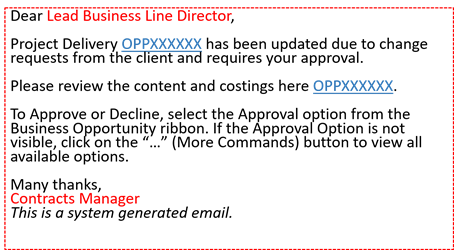
Users can view all “overdue” Business Opportunities submitted for approval by using the “Opportunity Approval Status Report For First Approver” system view.
Note: a reminder email will be sent to each approver, 1 day after the initial email was sent.
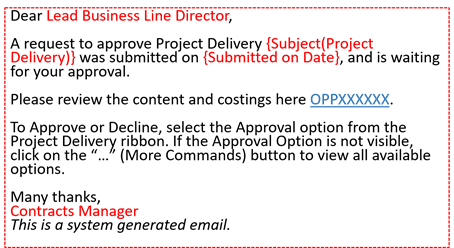
To “Approve” or “Decline” the 1st step in the approval process, use the following method.
1. Click on the OPPXXXXXX hyperlink within the received email, to open the business opportunity.
Tip: you may need to look in your Junk Email folder to initially find these emails.
2. Review the business opportunity’s content and attachments.
3. Click on the “APPROVAL: LEAD DIRECTOR” button in the command bar.

4. In the “Business Opportunity Approval: Business Line Director” popup
a. Click “Approve” or “Decline”.
b. Enter a reason in the “Please provide a reason” field.
c. Click on Next, then click on Finish.
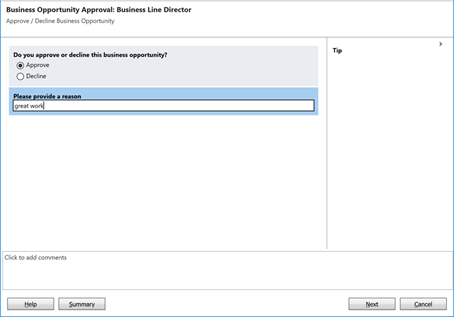
The Business Opportunity will be updated with the information entered by the Business Line Director. The “Time Taken by First Approving User” starts counting the number of days between the initial email send and the nominated person approving or declining the Business opportunity.
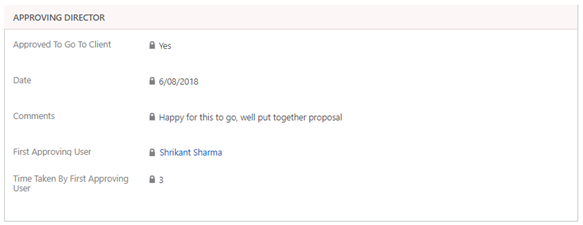
If the Business Line Director declines the business opportunity, you as owner of the business opportunity, will receive an email, like the example below.
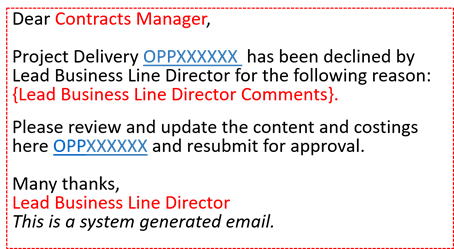
When this happens the Business Process Flow will revert to the Cost Proposal stage, and clear the Finalise Proposed Costings, Date and Finalise By fields. This allows you to modify the entered information and costings and resubmit the Business Opportunity for approval.
2nd Approving User
Approver 2 will be sent an email as soon as Approver 1 has approved the Business Opportunity. An example of the email is shown below.

Users can view all “overdue” Project Delivery’s submitted for approval by using the “Project Approval Status Report For Second Approver” system view.
Note: a reminder email will be sent to the 2nd approver, 1 day after the initial email was sent.
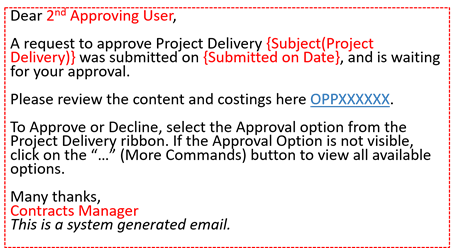
To “Approve” or “Decline” the 2nd step in the approval process, use the following method.
1. Click on the OPPXXXXXX hyperlink within the received email, to open the project delivery.
Tip: you may need to look in your Junk Email folder to initially find these emails.
2. Review the project delivery’s content and attachments.
3. Click on the “APPROVAL: 2ND APPROVER” button in the command bar.

4. In the “Business Opportunity Approval: 2nd Approver” popup.
a. Click “Approve” or “Decline”.
b. Enter a reason in the “Please provide a reason” field.
c. Click on Next, then click on Finish.
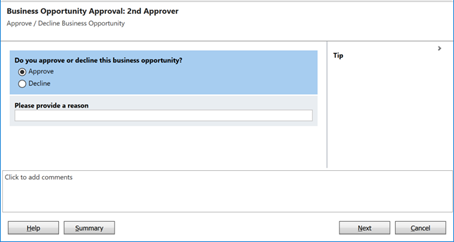
The Project Delivery will be updated with the information entered by the 2nd Approver. The “Time Taken by Second Approving User” starts counting the number of days between the initial email send and the nominated person approving or declining the Business opportunity.
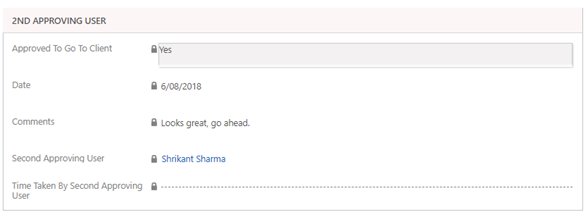
If the 2nd Approver declines the business opportunity, you as owner of the business opportunity, will receive an email, like the example below.
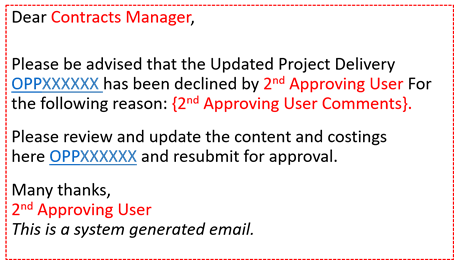
When this happens the Business Process Flow will revert to the Finalise Costs stage, and clear the Costs Confirmed, Date and Confirmed By fields. This allows you to modify the entered information and costings and resubmit the Project Delivery for approval.
Generate the Business Proposal
To generate a business proposal for your business opportunity, use the following method.
1. Click on the more commands button.
2. Click on Business Proposal.
Wait until the pop up dialogue box appears (see screenshot) to advise Business Proposal template generated successfully.
3. Click on OK, in pop up dialogue box.
4. Scroll down to Notes & Activities

5. Click on “Business Proposal Template For Project Delivery.docx” in Notes.

Tip: if the Note and associated attachment are not listed, refresh the web page (F5).
6. Choose Microsoft Word (default), If asked to open the document with what program.
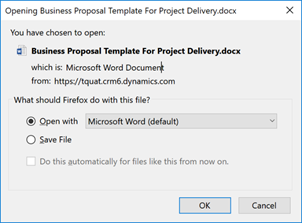
7. Click on OK.
8. Click on Enable Editing, when the Word document opens.
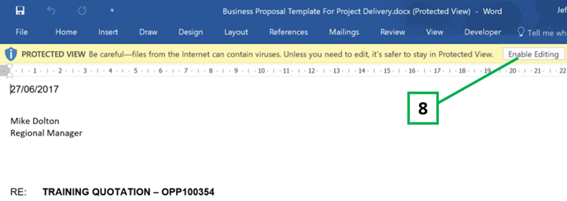
Schedules and Milestones
The Schedules and Milestones stage is used to capture an initial invoice schedule, allow you to modify (or regenerate) the schedule, update the schedule with invoice statuses, and manage the creation and assignment of milestone tasks.
Completing the Invoice Schedule stage
1. The flag icon in the business process flow ribbon indicates the current stage of this Project Delivery.
Note: ensure that you have entered as much information as possible in the above sections before completing this stage.
2. Click on the Invoice Schedules Finalised field to change it to Yes.
Note: this action will automatically populate the Date and Confirmed By fields.
3. Click on Next Stage.
Note: this action will “tick” the Schedules & Milestones stage, and move the flag icon to the next stage, exposing the Completion section

Editing of Invoice Schedule records by Finance
Each individual Invoice schedule record must be manually updated by a Finance team member to reflect the actual invoice(s) generated in the Finance Management System.
To edit an invoice schedule record, use the following method.
1. Select EduRe in the navigation bar
2. Click Project Deliveries in the menu options
3. Find and select the required record from the displayed list of records
– OR –
Enter a search string to find the required record
4. Click on the Subject of the required record (this action will open the Project Delivery record)
– OR –
Choose +EDIT from the command bar
– OR –
Double click (in white space) from the displayed records.
5. Scroll down to the Invoice Schedule
6. Find the invoice schedule record that you wish to edit.
Tip: you may need to use the paging feature to see more invoice schedule records.

7. Select the record you want by, double clicking (in white space) in the list of displayed records.
Note: this action will open the selected invoice schedule record.

8. Click in the Invoice Status field, and select the appropriate status from the dropdown list.
9. Click in the Purchase Order Number field, and enter the PO supplied by the client.
10. Click in the Invoice Number field, and enter the invoice number from FMS.
11. Click in the Actual Invoice Date field, and enter the invoice date from FMS.
12. Click in the Processed field, and enter the processing date from FMS.
13. Click on SAVE & CLOSE in the command bar.
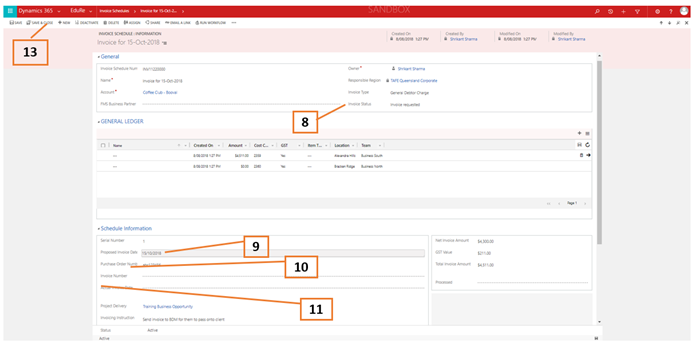
Create and Assign Milestones
The Milestones section is used to create, assign and save milestones for a Project Delivery.
Milestones can be created and assigned on behalf of other users. Once a milestone is created, assigned and saved, an email will be sent to the assignee.
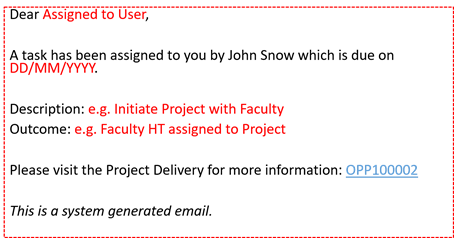
To create and assign a milestone, use the following method.
1. Select EduRe in the navigation bar
2. Click Project Deliveries in the menu options
3. Find and select the required record from the displayed list of records
– OR –
Enter a search string to find the required record
4. Click on the Subject of the required record (this action will open the Project Delivery record)
– OR –
Choose +EDIT from the command bar
– OR –
Double click (in white space) from the displayed records.
5. Scroll down to the Milestones section.
6. Click on the Add icon within the milestone grid.
7. Click in the Milestone Description field, and enter a meaningful description for this milestone task.
8. Click in the Assign to field, then find and select the user you are looking for.
9. Click in the Assigned By field, then find and select the user you are looking for.
10. Click in the Due Date field, and select the date from the pop up calendar.
11. Click in the Desired Outcomes field, and enter the required outcome for this milestone task.
12. Click in the Status field, and select Planned.
13. Click on the Save icon within the milestone grid.
14. Click on SAVE & CLOSE in the command bar.

Update Milestones
You will need to edit a Milestone once the assigned task has been completed or cancelled.
To edit a milestone, use the following method.
1. Select EduRe in the navigation bar.
2. Click Project Deliveries in the menu options.
3. Find and select the required record from the displayed list of records.
– OR –
Enter a search string to find the required record
4. Click on the Subject of the required record (this action will open the Project Delivery record).
– OR –
Choose +EDIT from the command bar.
– OR –
Double click (in white space) from the displayed records.
5. Scroll down to the Milestones section.
6. Click the selection box next to the Milestone you wish to edit.
7. Click on the Edit icon in the milestone grid.
8. Click in the Status field, then select Completed or Cancelled.
9. Click in the Date Completed field, and select the date from the pop up calendar.
10. Click in the Outcomes Achieved field, and enter a description of the achieved outcomes.
11. Click on the Save icon within the milestone grid.
12. Click on SAVE & CLOSE in the command bar.

Completion
The Completion stage allows you to capture the various dates related to completing the Project Delivery.
Completion Dates
The Completion Dates section capture the date of completion for delivery, evaluation letter/survey, acquittal undertaking, and overall completion date.
Completing the Project Delivery
1. The flag icon in the business process flow ribbon indicates the current stage of this Project Delivery.
Note: ensure that you have entered as much information as possible in the above sections before completing this stage.
2. Click on the Project Completed field to change it to Yes.
Note: this action will automatically populate the Date and Finalised By fields.
3. Click on Finish.
Note: this action will “tick” the Completion stage.
Assign a Project Delivery to a user or team
If a Project Delivery should be owned by another person within your organisation, you can assign the record to that person.
You can also assign a record to a team, or to yourself, if the Project Delivery is within your Business Unit.
To assign 1 or more Project Deliveries from the any of the Project Delivery views, or from within an open Project Delivery record; use the following method.
1. Select EduRe in the navigation bar
2. Click Project Deliveries in the menu options.
3. Find and select the required record(s) from any of the Business Opportunity views.
4. Click on the Assign button in the command bar (or from more commands …)
 – OR –
– OR –

5. Select User or Team by clicking in the Assign to field.
6. Enter a value from the User or Team field, or click the magnifying glass icon to Look Up More Records.
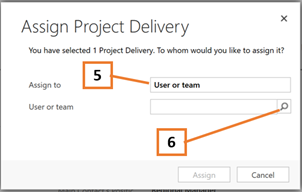
7. In the Look Up Record pop up.
a. Select Team or User in the Look for field.
b. Enter a search string in the Search
c. Select a record from the list of records.
d. Click on Add.
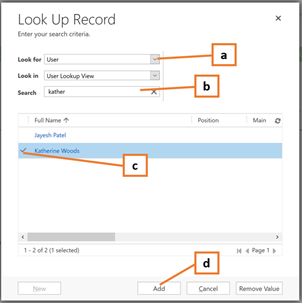
8. Click on Assign, to initiate the assign process.
